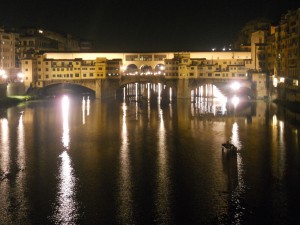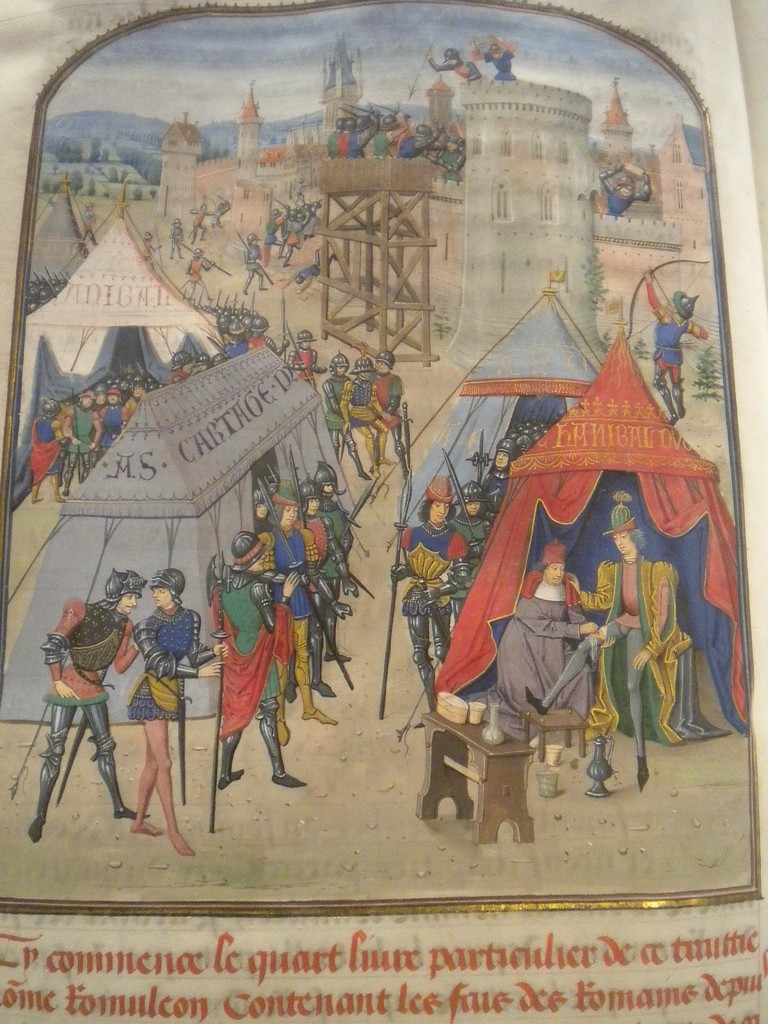A Brief Holiday Hello from Italy
 After the long silence since my last post, I wanted to put up something quick to reassure friends and readers who might find the silence worrisome. I am currently in Italy, with my academic conference duties done, my laptop broken and my camera battery fried, so, with no means of being practically productive and a holiday before me, I have no choice but to tromp about museums and enjoy myself. Accompanied by two good friends, I have carried on a lot of valuable debate with fellow historians, as well as philosophers and classicists. I have also researched many manuscripts, books, paintings, sculptures and other artifacts, along with many varieties of cheese, pasta, cold cuts, gnocchi, meatballs, roasts, fruits, pizzas, and, of course, gelatos. Sometimes fate is kind.
After the long silence since my last post, I wanted to put up something quick to reassure friends and readers who might find the silence worrisome. I am currently in Italy, with my academic conference duties done, my laptop broken and my camera battery fried, so, with no means of being practically productive and a holiday before me, I have no choice but to tromp about museums and enjoy myself. Accompanied by two good friends, I have carried on a lot of valuable debate with fellow historians, as well as philosophers and classicists. I have also researched many manuscripts, books, paintings, sculptures and other artifacts, along with many varieties of cheese, pasta, cold cuts, gnocchi, meatballs, roasts, fruits, pizzas, and, of course, gelatos. Sometimes fate is kind.
I am brimming with ideas for new posts, which I will start on as soon as I’m not on a borrowed machine and unstable hotel internet. I appreciate your patience. Meanwhile I will share a piece of Italian art fun:
This is an illuminated image from a Renaissance manuscript in the Laurenziana library in Florence. From a page of the French translation of a 14th century Latin History of Rome, the Romuleon compiled by Benvenuto da Imola, this image shows the illustrator’s imagined version of the Carthaginian army camp. In addition to armor and siege preparation, you can see a tent on the right-hand side where a doctor is performing surgery on a wounded officer’s leg. This kind of image is extremely valuable for historians, in learning about what the Renaissance imagined the ancient world was like, which was very much not what we imagine it was like. Hannibal’s lovely gold slit-sleeved coat and colorful hat are particularly choice touches. This type of illustration is also useful as a snapshot for historians attempting to reconstruct information about fleeting artifacts of Renaissance culture, like tents, plumes, the little bottles you used for a meal, or for medical treatment, things which rarely survive in physical form but are casually depicted here by an artist imagining a camp scene, complete with a doctor’s equipment. The illustration itself takes up a whole manuscript page, so pretty close in size to what you probably see on your computer screen:
6 Responses to “A Brief Holiday Hello from Italy”
-
I’ve just found your blog and I am huge fan. I found you because I love to read anything and everything about Italy and you are so erudite and your writing style is so delightful that I just started reading everything. I’m currently working on a book on homophobia in Jamaica and have been stuck on some tricky subject matter- but your amazing essay/post on Beccaria has cleared a lot of things up for me. It’s too much to get into here but the quick version is: THANK YOU. You answered questions I didn’t even know how to formulate with that essay since I know very little about the history of crime and punishment, and now thanks to you, I have a nice springboard for further research. Please tell me you’ll be in Italy this coming summer and that we can meet! I’m taking my brother on a trip when he graduates from high school and we will be starting in Florence. It would be a pleasure to meet you and take you out for aperitivo and introduce you to my italian friends who live there. Thanks again for the great Beccaria essay!
-
This reminds me of a question I have about how the past thought of the even-further-past. This sort of anachronism in “set dressing” seems common in old art. The perceived need to get the details historically accurate seems to be a quite recent thing? In fact, I get the impression that the study of the past for its own sake and on its own terms – rather than as a received set of myths – is an invention of the… 19th century?
How did the artist who made this think about what he was portraying? Did he think it beside the point to acknowledge that the Carthaginians would have dressed differently and fought with different technology? Did he not realize? Did he know he didn’t know what it would have looked like, and chose to punt?
This seems like something you might know about; if so, I’d be interested to read a post on that.
-
The medical tent is red. I wonder if that is to help the wounded find it or to warn their glory-seeking enemy not to attack it.
I came across a list of 67 “human universals” in the E.O. Wilson book, Social Conquest of Earth, that was compiled by Donald Brown in his book, Human Universals. Surgery is in that list, meaning that no human society has ever been studied that did not practice surgery. “Hand work,” the etymology of surgery, has always seemed a little too common for such a serious activity. Well, it is very common.
There are many passages in Athenaeus where he is trying to establish a real sense of the past. At the beginning of book 6 he argues that the Homeric heroes could not have been served on silver platters because nothing as lavish as that existed then. He also mentions — completely off topic — that folks in 3rd cent BC Athens, I think, would put their crockery out for rent when they weren’t using it.
-
Thank you, Vance. A very interesting observation to share. As an historian I’m always so wary of generalizing inappropriately, assuming that something that’s true of several cultures I’ve seen is true of all of them, that when a well-researched true universal comes up like this one it’s always particularly fascinating.
The only other ones I can remember at the moment are from a survey of facial expressions which found that all human cultures seem to raise our eyebrows when we (a) recognize a familiar person or (b) talk to a baby; and from a study of food culture that all human civilizations that have had access to salt have consumed at least 600x as much salt per day as we need to live, because apparently humans love salt.



